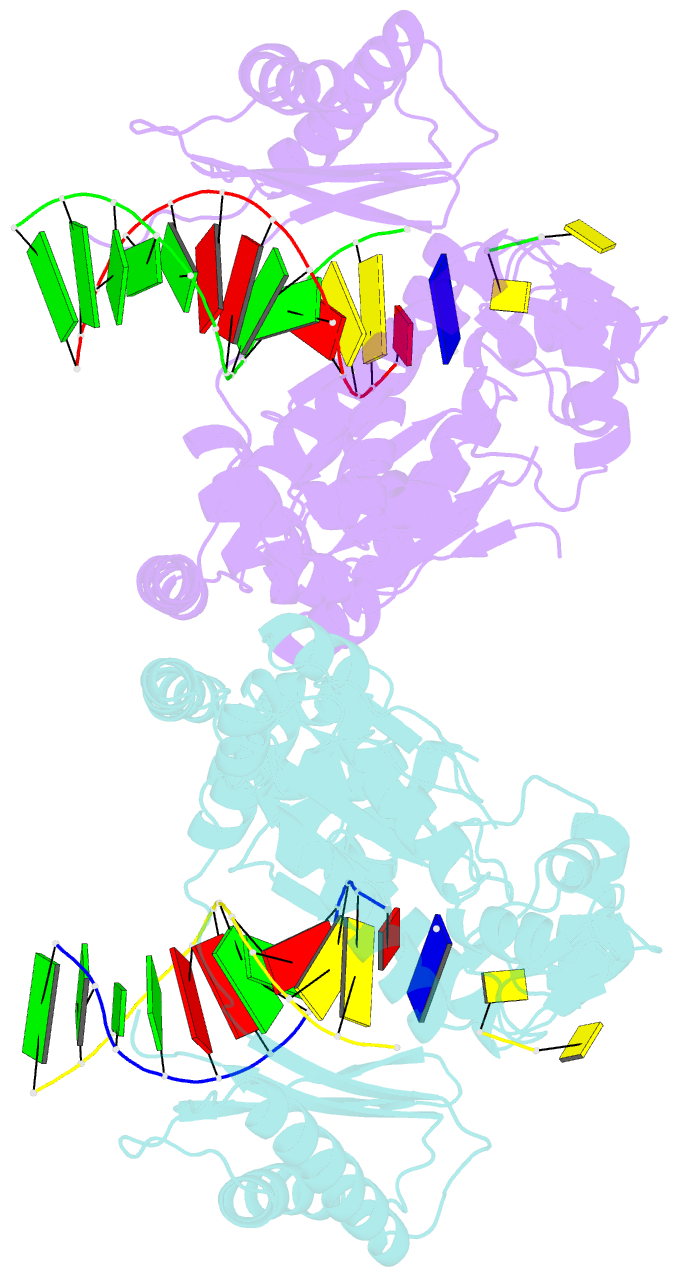Summary information and primary citation
- PDB-id
- 3pzp; SNAP-derived features in text and JSON formats;
DNAproDB
- Class
- transferase-DNA
- Method
- X-ray (3.336 Å)
- Summary
- Human DNA polymerase kappa extending opposite a cis-syn thymine dimer
- Reference
- Vasquez-Del Carpio R, Silverstein TD, Lone S, Johnson RE, Prakash L, Prakash S, Aggarwal AK (2011): "Role of human DNA polymerase kappa in extension opposite from a cis-syn thymine dimer." J.Mol.Biol., 408, 252-261. doi: 10.1016/j.jmb.2011.02.042.
- Abstract
- Exposure of DNA to UV radiation causes covalent linkages between adjacent pyrimidines. The most common lesion found in DNA from these UV-induced linkages is the cis-syn cyclobutane pyrimidine dimer. Human DNA polymerase κ (Polκ), a member of the Y-family of DNA polymerases, is unable to insert nucleotides opposite the 3'T of a cis-syn T-T dimer, but it can efficiently extend from a nucleotide inserted opposite the 3'T of the dimer by another DNA polymerase. We present here the structure of human Polκ in the act of inserting a nucleotide opposite the 5'T of the cis-syn T-T dimer. The structure reveals a constrained active-site cleft that is unable to accommodate the 3'T of a cis-syn T-T dimer but is remarkably well adapted to accommodate the 5'T via Watson-Crick base pairing, in accord with a proposed role for Polκ in the extension reaction opposite from cyclobutane pyrimidine dimers in vivo.





